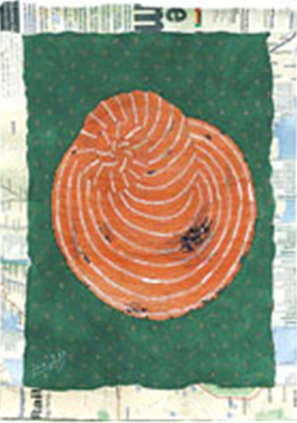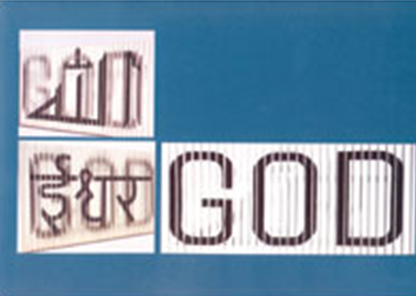MINIATURE: Survival Of A Revival
This is a collection of articles archived for the excellence of their content. Readers will be able to edit existing articles and post new articles directly |
MINIATURE: Survival Of A Revival
By Ali Adil Khan
We are experiencing a modern revival of miniature painting tradition that is unrivalled. This contemporary miniature art movement, emanating from a premier art institute of Pakistan, while being firmly grounded in tradition, has taken post-modern art by storm. It has a serious following locally and internationally and enjoys the support of curators, gallery owners, critics and collectors alike.
This movement is strong, moving rapidly and is sure to leave its mark on the international art scene. The credit goes to the modern practitioners and teachers of miniature art. Early visionaries at the National College of Arts (NCA) in Lahore, Zahoor ul Akhlaq, followed by Salima Hashmi, Bashir Ahmed and Imran Qureshi have believed in the talents of their students and designed an ingenious curriculum and an exigent training program that continues to bring the best out of them.
Some of these industrious students have become leading proponents of contemporary miniature art around the world with a broad private and institutional following.
Some stalwarts clearly standout. Shahzia Sikander was the first to breakaway from the miniature tradition, and helped establish an art form that is now known and recognised as contemporary or neo-miniature style of painting. She remains the greatest of them all and there are only two ways to describe her art practice — brilliant and exquisite. She has now entered the mainstream of contemporary art internationally and is a recognised superstar. In a recent auction at Christies in New York, one of her early works from her scroll series set a new record for sale by an artist of Pakistani origin.
Others, who followed her success, have held their values and traditional training central to their practise, not compromising them for quick buck. These trail blazers, who are now in the upper echelon of contemporary miniature art internationally include: Imran Qureshi, Tazeen Qayyum, Aisha Khalid, Talha Rathore, Nusra Latif Qureshi, Saira Wasim and Reeta Saeed. They can be referred to as the magnificent seven of NCA. Others who are fast catching up through their prolific practice, creative talents and international exhibitions are Waseem Ahmed, Hasnat Mehmood, Khadim Ali, Mohammed Zeeshan and Sabeen Raja.
While Imran Qureshi’s work on vasli exhibited in London, Hong Kong and Oxford more recently continues to be very strong (as he can probably paint with his eyes closed — meant as a compliment), his site-specific wall paintings at the 1st Singapore Biennale in 2006 was most impressive. It was truly outstanding and definitely leading edge.
The contemporary miniature art market is cut throat to say the least. As a new breed of young artists jumps on the bandwagon, there are bound to be more failures than resounding successes. As experienced curators and discerning collectors closely examine and follow the emergence and development of this trend, they will critically critique the works of the artists. Any repetition, reproduction, stagnation, mediocrity will be severely penalised. It can be said with confidence that not all currently practicing contemporary miniature artists are good.
The ones that are good and with potential of becoming great, are the ones that are continuously experimenting and pushing the boundaries beyond the restrained borders of miniature paintings. For example, Tazeen Qayyum has consistently surpassed expectations of curators and collectors. In the late 1990s she incorporated borders made from collages of interesting newspaper cuttings and quickly moved away from figurative to contextual use of a motifs such as the veil and cockroach that enabled her to assert her socio-political views on the vasli.
She experimented and employed the use of block printing, Xerox photo transfer and digital techniques in her works of the early 2000s. In 2005, she pasted strands of her long hair on the vasli. In 2006, Qayyum took the vasli to a third dimension by adding labels and entomology pins to her work and changed the framing to box frames. Her depiction of the disgraceful human pyramid made forcibly at Abu Gharib Prison in Iraq using cockroaches with minute details was stunning to say the least.
In 2007, Qayyum pushed the boundary even further by exhibiting her works horizontally on a display table, providing viewers an experience similar to museum exhibits. Four out of five works exhibited in Urban Myths and Modern Fables show at the Doris McCarthy Gallery in Toronto in 2008 were presented at waist level, placed horizontally on tables.
Qayyum’s new work for a show in California this summer uses the ‘halo’ prevalent in traditional miniatures as a central theme for drawing contemporary elements into her work. While the cockroach is still present, it seems to be morphing into something new. I believe this incredible track record puts Qayyum in the forefront of this movement.
Recent works by Aisha Khalid, Talha Rathore, Saira Wasim, Nusra Latif Qureshi and Reeta Saeed too show substance, new directions and are incredibly detailed. Khalid’s play with computer generated like graphical imagery on a large scale, Rathore’s transition from trees to amoeba on a New York subway map, Wasim’s continued distinction in political satire and portraiture, Qureshi’s innovative use for colonial period photography and Saeed’s stitching of vasli on canvas behind cotton kurta scrims painstakingly prepared by pulling one thread at a time to form a veil are all great examples of excellence and originality that give contemporary miniature painting a good name.
There are many more promising senior artists who can reach new heights through rigorous experimentation and an urge to push and re-invent the boundaries. They are Ambreen Butt, Sumaira Tazeen, Usman Saeed, Sherbano Qizilbash and Saira Sheikh. Curators and critics will watch them closely as they fulfil the much needed requirement to re-invent and progress.
The survival of the revival now solely rests in the capable hands of these practitioners and new comers into the field who must learn from the success of their predecessors and set high standards for themselves. They should not and must not expect to sell their works for exorbitant prices, as they first need to experiment, prove and establish their art practice. As collector of contemporary Pakistani art, London-based Kamran Anwar notes, “The Pakistani art market is clearly at an inflexion point. The contemporary miniature movement has led the way and holds a distinct place in the South Asian artistic landscape.
“The big challenge for these artists is to continue to innovate and create without falling into the temptation of doing the same thing again and again for short term commercial gains.”
Ali Adil Khan is the founder and curator of South Asian Gallery of Art (SAGA) in Toronto, Canada.
Top: Imran Qureshi Top right : Talha Rathore Left: Shahzia Sikander, Hood red rider II


